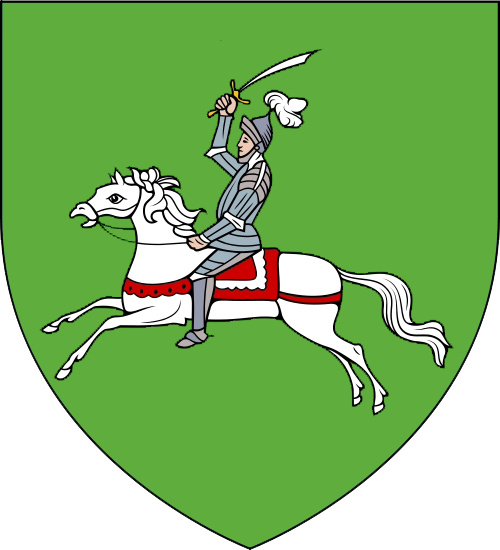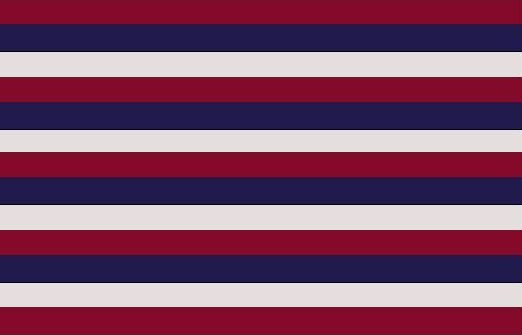|
HMS Merlin (1757)
HMS ''Merlin'' was a sloop of war, bearing sixteen guns, commanded by Samuel Reeve, and saw service during the American Revolutionary War. Background As part of the advance fleet of Francis Reynolds, these warships were to force the upper passage of the Delaware River, attack and silence Fort Mercer, and Fort Mifflin, during the Battle of Red Bank The Battle of Red Bank was a battle fought on October 22, 1777 during the American Revolutionary War in which a British and Hessian force was sent to take Fort Mercer on the left bank (or New Jersey side) of the Delaware River just south of Ph ..., which was intended to open navigation to Philadelphia, allowing the resupplying of British troops occupying that city. Along with HMS ''Augusta'', it ran aground trying to avoid river obstacles while the river tide water was receding. Captain Reynolds ordered the ship destroyed to prevent its capture by the Americans in October, 1777. McGuire, 2007, p. 174 Citations Sources * ... [...More Info...] [...Related Items...] OR: [Wikipedia] [Google] [Baidu] |
Sloop Of War
In the 18th century and most of the 19th, a sloop-of-war in the Royal Navy was a warship with a single gun deck that carried up to eighteen guns. The rating system covered all vessels with 20 guns and above; thus, the term ''sloop-of-war'' encompassed all the unrated combat vessels, including the very small gun-brigs and cutters. In technical terms, even the more specialised bomb vessels and fireships were classed as sloops-of-war, and in practice these were employed in the sloop role when not carrying out their specialised functions. In World War I and World War II, the Royal Navy reused the term "sloop" for specialised convoy-defence vessels, including the of World War I and the highly successful of World War II, with anti-aircraft and anti-submarine capability. They performed similar duties to the American destroyer escort class ships, and also performed similar duties to the smaller corvettes of the Royal Navy. Rigging A sloop-of-war was quite different from a civilian ... [...More Info...] [...Related Items...] OR: [Wikipedia] [Google] [Baidu] |
Battle Of Red Bank
The Battle of Red Bank was a battle fought on October 22, 1777 during the American Revolutionary War in which a British and Hessian force was sent to take Fort Mercer on the left bank (or New Jersey side) of the Delaware River just south of Philadelphia, but was decisively defeated by a far inferior force of colonial defenders. Although the British did take Fort Mercer a month later, the victory supplied a sorely-needed morale boost to the American cause, delayed British plans to consolidate gains in Philadelphia, and relieved pressure on General George Washington's army to the north of the city. Prelude to battle After the British capture of Philadelphia on September 26, 1777 and the failure of the American surprise attack against the British camp at the Battle of Germantown on October 4, the Americans tried to deny the British use of the city by blockading the Delaware River. To that end, two forts were constructed commanding the river. One was Fort Mercer on the New Jer ... [...More Info...] [...Related Items...] OR: [Wikipedia] [Google] [Baidu] |
Ships Built On The River Thames
A ship is a large watercraft that travels the world's oceans and other sufficiently deep waterways, carrying cargo or passengers, or in support of specialized missions, such as defense, research, and fishing. Ships are generally distinguished from boats, based on size, shape, load capacity, and purpose. Ships have supported exploration, trade, warfare, migration, colonization, and science. After the 15th century, new crops that had come from and to the Americas via the European seafarers significantly contributed to world population growth. Ship transport is responsible for the largest portion of world commerce. The word ''ship'' has meant, depending on the era and the context, either just a large vessel or specifically a ship-rigged sailing ship with three or more masts, each of which is square-rigged. As of 2016, there were more than 49,000 merchant ships, totaling almost 1.8 billion dead weight tons. Of these 28% were oil tankers, 43% were bulk carriers, and 13% were c ... [...More Info...] [...Related Items...] OR: [Wikipedia] [Google] [Baidu] |
1757 Ships
Events January–March * January 2 – Seven Years' War: The British Army, under the command of Robert Clive, captures Calcutta, India. * January 5 – Robert-François Damiens makes an unsuccessful assassination attempt on Louis XV of France, who is slightly wounded by the knife attack. On March 28 Damiens is publicly executed by burning and dismemberment, the last person in France to suffer this punishment. * January 12 – Koca Ragıp Pasha becomes the new Grand Vizier of the Ottoman Empire, and administers the office for seven years until his death in 1763. * February 1 – King Louis XV of France dismisses his two most influential advisers. His Secretary of State for War, the Comte d'Argenson and the Secretary of the Navy, Jean-Baptiste de Machault d'Arnouville, are both removed from office at the urging of the King's mistress, Madame de Pompadour. * February 2 – At Versailles in France, representatives of the Russian Empire ... [...More Info...] [...Related Items...] OR: [Wikipedia] [Google] [Baidu] |
Naval Battles Of The American Revolutionary War
The American Revolutionary War saw a series of battles involving naval forces of the British Royal Navy and the Continental Navy from 1775, and of the French Navy from 1778 onwards. Although the British enjoyed more numerical victories, these battles culminated in the surrender of the British Army force of Lieutenant-General Earl Charles Cornwallis, an event that led directly to the beginning of serious peace negotiations and the eventual end of the war. From the start of the hostilities, the British North American station under Vice-Admiral Samuel Graves blockaded the major colonial ports and carried raids against patriot communities. Colonial forces could do little to stop these developments due to British naval supremacy. In 1777, colonial privateers made raids into British waters capturing merchant ships, which they took into French and Spanish ports, although both were officially neutral. Seeking to challenge Britain, France signed two treaties with America in February 1 ... [...More Info...] [...Related Items...] OR: [Wikipedia] [Google] [Baidu] |
Mcguire2007
The MacGuire ( ) family is an Irish clan based in County Fermanagh. The name derives from the Gaelic , which is "son of Odhar" meaning "dun", "dark one". According to legend, this relates to the eleventh descendant of Colla da Chrich, great-grandson of Cormac mac Airt, who was monarch of Ireland about the middle of the third century. From the 13th to the 17th centuries, the MacGuires were kings of Fermanagh. Naming conventions The surname has been anglicized variously as McGuire, McGwire, McGwyre and most commonly, Maguire (from variant Irish spelling ''Mag Uidhir''). History The MacGuire sept is primarily associated with modern-day County Fermanagh. They possessed the entire county, also known as Maguire's Country, from about 1250 C.E. and maintained their independence as Lords of Fermanagh down to the reign of King James VI & I, when their country was confiscated like other parts of Ulster. The MacGuires supplied Chiefs or Princes to Fermanagh, from about A.D. 1264, wh ... [...More Info...] [...Related Items...] OR: [Wikipedia] [Google] [Baidu] |
HMS Augusta (1763)
HMS ''Augusta'' was a 64-gun third rate ship of the line of the Royal Navy, launched on 24 October 1763 at Rotherhithe. After running aground in the Delaware River ''Augusta'' ran aground and was accidentally destroyed by fire on 22 October 1777 during the Battle of Red Bank.Ships of the Old Navy, ''Augusta''. Loss On the evening of 22 October 1777, the ''Augusta'' and several other warships, under the command of Admiral Francis Reynolds, had sailed up the Delaware River to a point a short distance below some ''chevaux de frise'' obstructions in order to fire at Fort Mercer the following day. As the tide fell, both ''Augusta'' and (16) went aground on one of the several sandbars around that location. Despite attempts during the night by (44) to free ''Augusta'' from its predicament, the warship remained hard aground. About 9:00AM on 23 October, a general action started with (32) and (28) joining other vessels in the bombardment. The British ships were engaged by F ... [...More Info...] [...Related Items...] OR: [Wikipedia] [Google] [Baidu] |
Fort Mifflin
Fort Mifflin, originally called Fort Island Battery and also known as Mud Island Fort, was commissioned in 1771 and sits on Mud Island (or Deep Water Island) on the Delaware River below Philadelphia, Pennsylvania near Philadelphia International Airport. During the American Revolutionary War, the British Army bombarded and captured the fort as part of their conquest of Philadelphia in autumn 1777. In 1795 the fort was renamed for Thomas Mifflin, a Continental Army officer and the first post-independence Governor of Pennsylvania. The United States Army began to rebuild the fort in 1794 and continued to garrison and build on the site through the 19th century. It housed prisoners during the American Civil War. The army decommissioned Fort Mifflin for active duty infantry and artillery in 1962. However, while the older portion of the fort was returned to the City of Philadelphia, a portion of the fort's grounds are still actively used by the United States Army Corps of Engineers ... [...More Info...] [...Related Items...] OR: [Wikipedia] [Google] [Baidu] |
Samuel Reeve
Vice-Admiral Samuel Reeve (c. 1733 – 5 May 1803) was an officer of the British Royal Navy who saw service in the American Revolutionary War and the French Revolutionary Wars. in 1779 he was captain of HMS ''Surprize'', seizing American privateers ''Monmouth'', ''Wild Cat'' and ''Jason'' off the coast of Newfoundland. On 20 January 1780 ''Surprize'' captured French privateer ''Duguay Trouin'', and in January 1781 captured ''Les Sept Freres''. In the French Revolutionary Wars, Reeve was captain of with the Mediterranean Fleet under Lord Hood. In October 1793 he was ordered, along with and , to attack a French frigate anchored in the harbour at Genoa. The Raid on Genoa was a success, and six days later Reeve discovered and captured the abandoned French ship ''Impérieuse'' at La Spezia. Reeve was promoted to vice-admiral in 1799, and retired to his home near Ipswich. On 5 May 1803 Reeve was riding in a chaise A one-horse chaise A three-wheeled "Handchaise", Germany, ... [...More Info...] [...Related Items...] OR: [Wikipedia] [Google] [Baidu] |
Fort Mercer
Fort Mercer was a earthen fort on the Delaware River on its New Jersey shore constructed by the Continental Army during the American Revolutionary War. Built by Polish engineer Thaddeus Kosciuszko under the command of George Washington, Fort Mercer was built in 1777 to block the approach to Philadelphia, Pennsylvania in concert with Fort Mifflin on the Pennsylvania side. Fort Mercer was located in an area called Red Bank in what is now the borough of National Park in Gloucester County, New Jersey. The fort was named in honor of Brigadier General Hugh Mercer who died earlier that year at the Battle of Princeton. The fort's site is now part of Red Bank Battlefield Historical Park, which includes a monument and museum. Several cannons attributed to British warships lost supporting the attack on the fort, and others found buried at the fort itself, are in the park. Background Fort Mercer was built and Fort Mifflin rebuilt and garrisoned to protect a line of '' chevaux de fri ... [...More Info...] [...Related Items...] OR: [Wikipedia] [Google] [Baidu] |
Delaware River
The Delaware River is a major river in the Mid-Atlantic (United States), Mid-Atlantic region of the United States. From the meeting of its branches in Hancock (village), New York, Hancock, New York, the river flows for along the borders of New York (state), New York, Pennsylvania, New Jersey, and Delaware, before emptying into Delaware Bay. It is the longest free-flowing river in the Eastern United States. The river has been recognized by the National Wildlife Federation as one of the country's Great Waters. The river's drainage basin, watershed drains an area of and provides drinking water for 17 million people. The river has two branches that rise in the Catskill Mountains of New York: the West Branch Delaware River, West Branch at Mount Jefferson (New York), Mount Jefferson in Jefferson, New York, Jefferson, Schoharie County, New York, Schoharie County, and the East Branch Delaware River, East Branch at Grand Gorge, New York, Grand Gorge, Delaware County, New York, ... [...More Info...] [...Related Items...] OR: [Wikipedia] [Google] [Baidu] |






